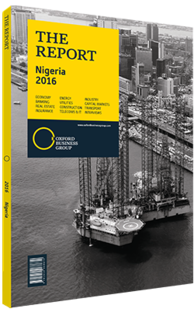Food and beverages
Nigerian Breweries (NB) was incorporated in 1946 and opened its Lagos Brewery in 1949. The company has since established other breweries in Aba, Kaduna, Ibadan and Ameke, with the facility at Ameke regarded as the largest brewery in the country. In 2011 NB acquired Sona Systems Associates Business Management and Life Breweries from Heineken. This followed Heineken’s acquisition of controlling interests in five breweries in Nigeria from Sona Group in January 2011. In 2014 the company received approval from the Securities and Exchange Commission and the respective shareholders of NB and Consolidated Breweries to merge the operations of both firms. The merger became final on December 31, 2014. Following the successful merger, the company added three additional breweries in Ijebu-Ode in Ogun State, AwoOmamma in Imo State and Makurdi in Benue State. The merger also brought another seven brands into NB’s portfolio. Today, the company has 11 breweries, two malting plants and 26 sales depots.
Financial Performance
In the first quarter of 2016 NB’s after-tax profit grew by 4% year-on-year (y-o-y) to N10.5bn ($33.1m). Although sales grew by 11% y-o-y to N77.6bn ($245m), a 55% y-o-y rise in net interest expense and a 10% y-o-y increase in operating expenses partially offset top-line growth and reduced profits before tax (PBT) growth to 4% y-o-y. PBT growth, though in the single digits, is significant, particularly because it is the first following six consecutive quarters of y-o-y declines. Sales were down by 2% quarter-on-quarter (q-o-q), while both PBT and after-tax profits declined by 11-12% q-o-q due to a significant q-o-q gross margin contraction of 481 basis points to 48.1% and a 19% q-o-q expansion in net interest expenses. The declines are not surprising given that the fourth quarter is typically the strongest in the year due to high seasonal demand. Sales, PBT and after-tax profits all beat forecasts by between 9% and 10%. Strong top-line y-o-y growth was driven by the continued success of brands in the value-for-money category. In 2015 the strong performance of value brands such as Goldberg, Life and 33 Export was the primary driver of top-line growth. As such, sales growth was likely driven more by volume growth than price increases. The volume growth for mainstream beers such as Star Lager remains constrained as many consumers downgrade to cheaper brands. The 10% spike in operating expenditure was most likely driven by inflationary price pressures. In contrast to expectations, due to a margin squeeze related to challenges sourcing foreign exchange (FX) and the premium of the parallel market rate over the official rate, NB’s gross margin dropped by 43 basis points y-o-y to 48.1%. Given that around 60% of its inputs are imported, the full pass-through from FX are likely not yet fully reflected in these results.
Development Strategy
With a market share of around 70%, NB has maintained its dominance in the Nigerian beer market via three strategies: investing in installed capacity ahead of the curve, maintaining a wide product portfolio and a strong distribution network. Over the last three years, its capital expenditure has averaged around N31.1bn ($98.2m), or roughly 150% higher than the average capex of its closest rival, Guinness Nigeria. Much of this has been spent on the acquisition of smaller brewers; however, given macroeconomic headwinds and a slowdown in consumer demand, a reduction in capex over the next few years is likely. While the tough operating environment, including the squeeze on household wallets, resulted in the slowdown of NB’s mainstream brands, its acquisitions have given it increased exposure to the fast-growing affordable segment of the beer market. Beyond the first quarter of 2016, top-line growth is likely to hover around the mid-to-high single-digit territory.
You have reached the limit of premium articles you can view for free.
Choose from the options below to purchase print or digital editions of our Reports. You can also purchase a website subscription giving you unlimited access to all of our Reports online for 12 months.
If you have already purchased this Report or have a website subscription, please login to continue.

